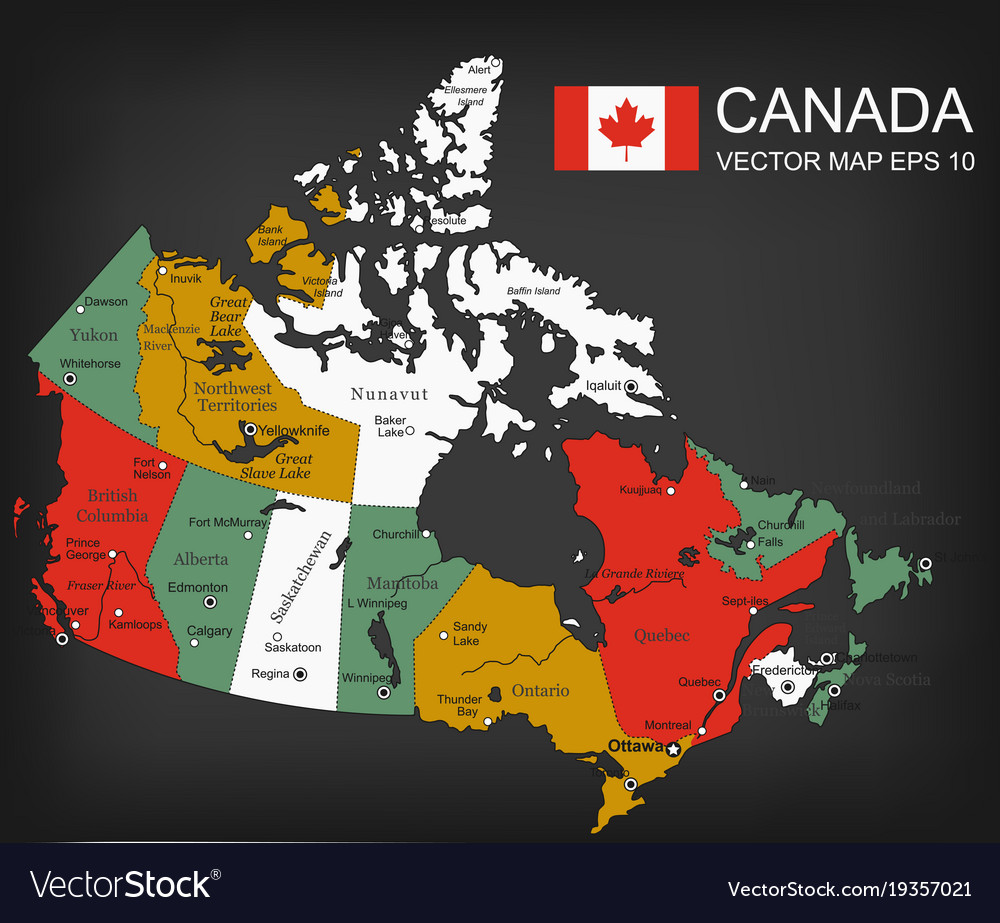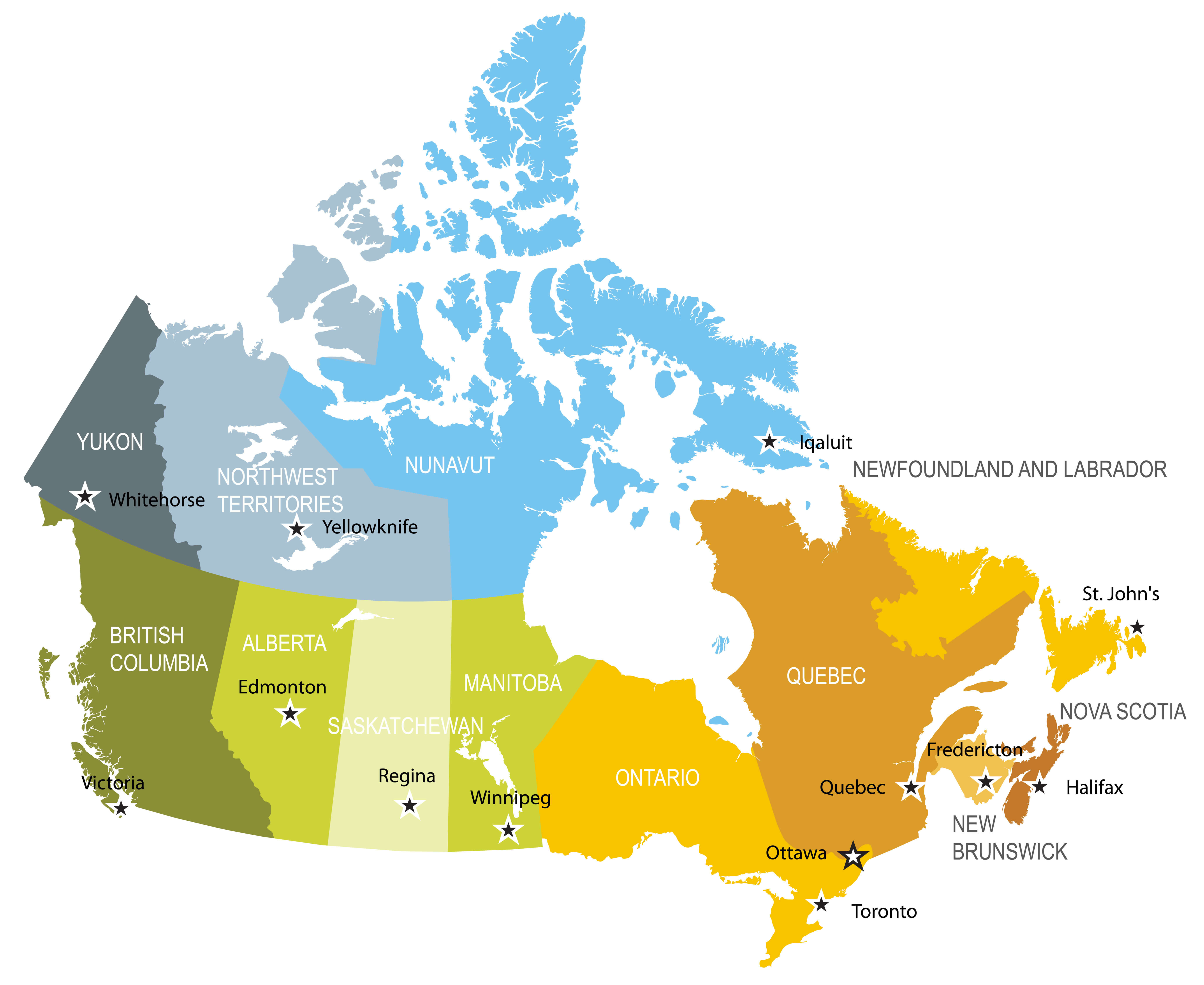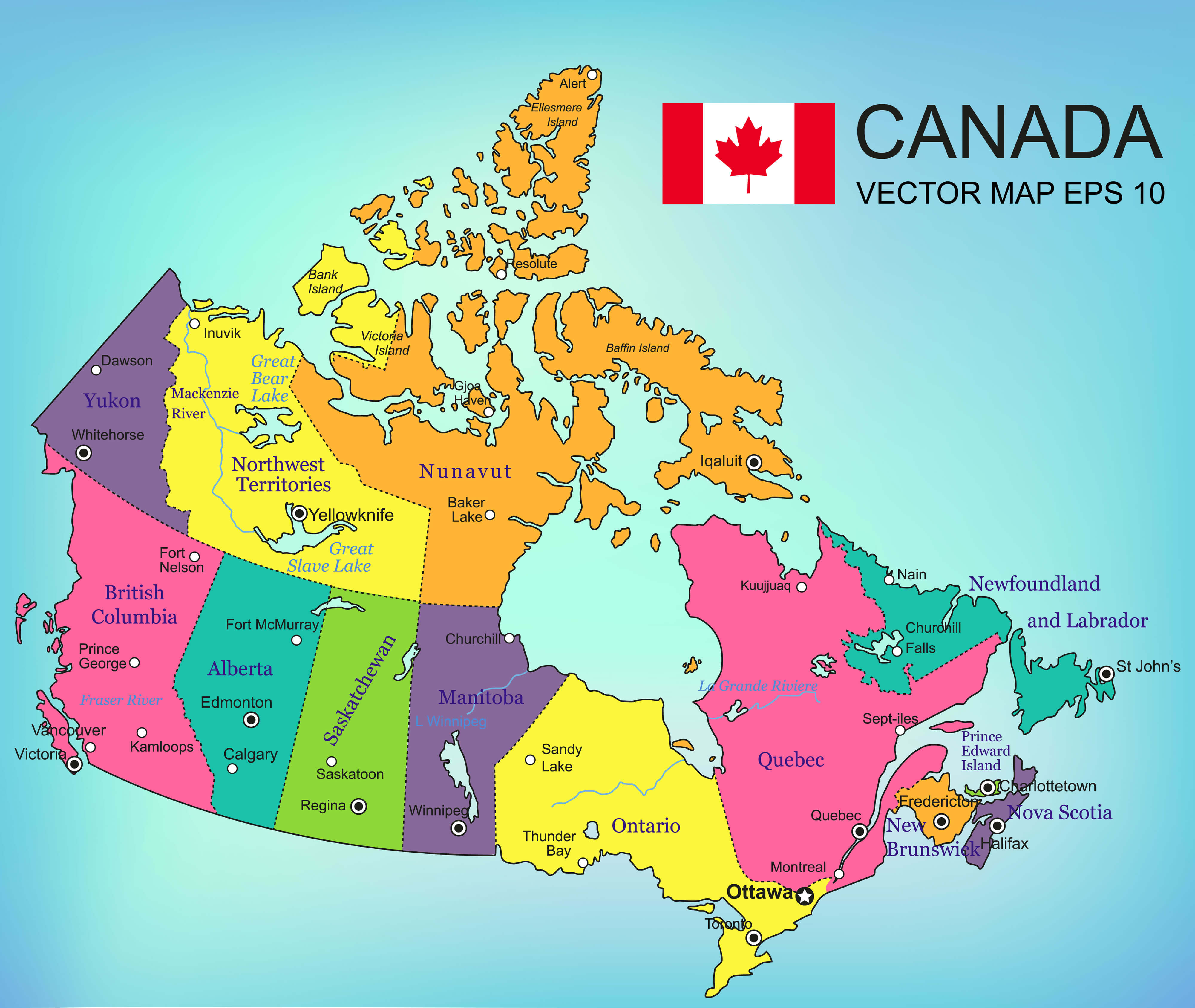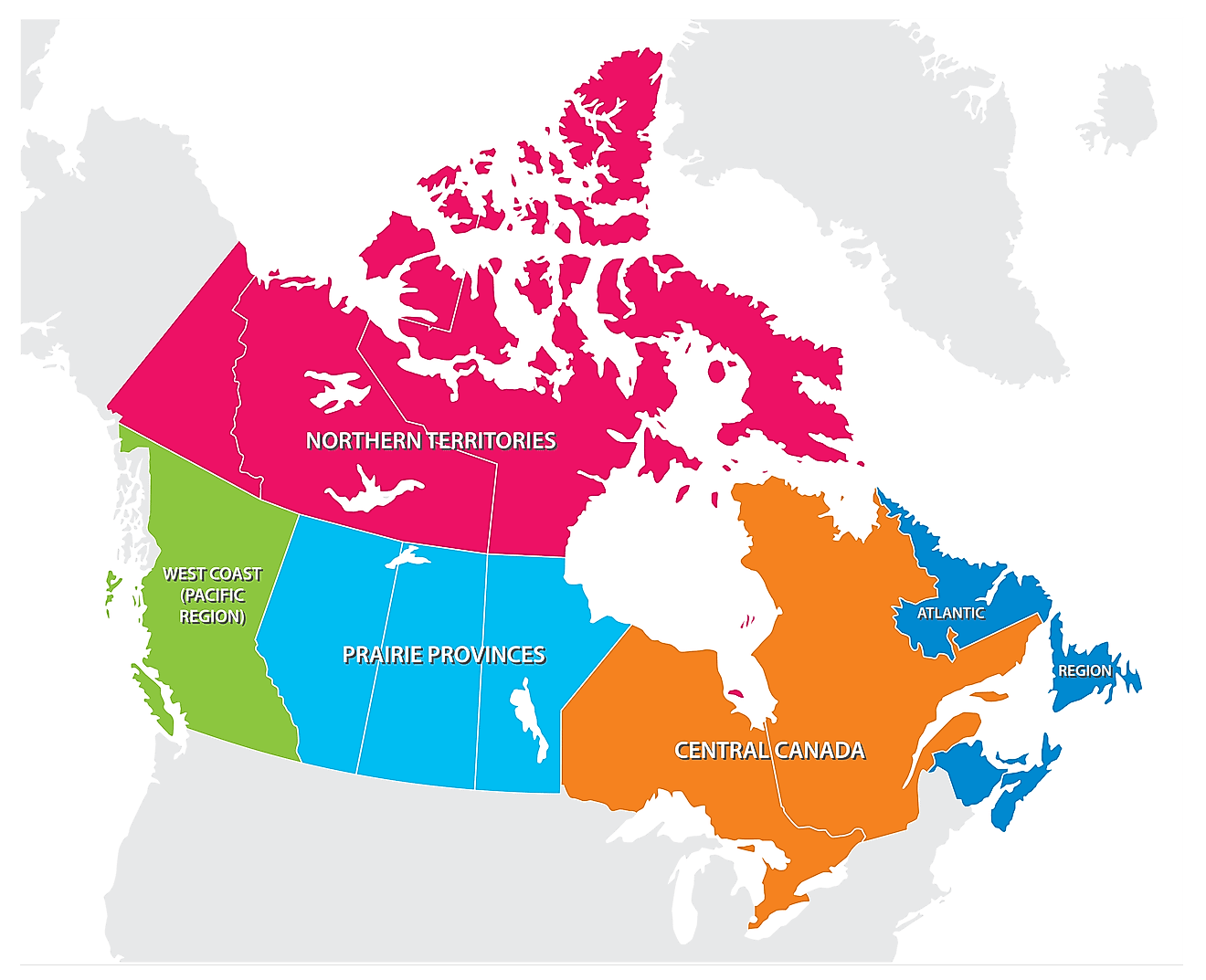A Comprehensive Guide To Canada’s Provinces: A Visual Exploration
A Comprehensive Guide to Canada’s Provinces: A Visual Exploration
Related Articles: A Comprehensive Guide to Canada’s Provinces: A Visual Exploration
Introduction
In this auspicious occasion, we are delighted to delve into the intriguing topic related to A Comprehensive Guide to Canada’s Provinces: A Visual Exploration. Let’s weave interesting information and offer fresh perspectives to the readers.
Table of Content
A Comprehensive Guide to Canada’s Provinces: A Visual Exploration

Canada, a vast and diverse nation, boasts ten provinces and three territories, each with its unique character and contributions to the Canadian tapestry. Understanding the geographical arrangement of these regions is crucial for appreciating the country’s history, culture, and economy. This article provides a comprehensive overview of Canada’s provinces, utilizing a visual approach to illuminate their spatial relationships and individual identities.
A Visual Journey Across Canada’s Provinces
Imagine a map of Canada, a sprawling landmass stretching from the Atlantic to the Pacific, with its northern frontier reaching towards the Arctic. This map is the starting point for our exploration, a visual guide to the ten provinces that define the heart of Canada:
-
Newfoundland and Labrador: Situated on the easternmost edge of Canada, Newfoundland and Labrador is a province steeped in maritime history and rugged natural beauty. Its iconic coastline, dotted with picturesque fishing villages, evokes images of rugged seafaring traditions.
-
Prince Edward Island: The smallest of Canada’s provinces, Prince Edward Island is a charming island province known for its rolling hills, red soil, and idyllic beaches. Its literary legacy, most notably associated with L.M. Montgomery’s "Anne of Green Gables," adds a touch of romanticism to its landscape.
-
Nova Scotia: Located on the Atlantic coast, Nova Scotia is a province rich in history and culture. Its diverse coastline, with its numerous inlets and bays, harbors a vibrant maritime heritage. From the bustling city of Halifax to the picturesque fishing villages along the coast, Nova Scotia offers a blend of urban sophistication and rural charm.
-
New Brunswick: Sharing a border with Nova Scotia, New Brunswick is a province known for its diverse landscapes, including rolling hills, dense forests, and the Bay of Fundy, renowned for its exceptionally high tides. Its bilingual heritage, with both English and French as official languages, adds to its cultural richness.
-
Quebec: The largest province in Canada, Quebec is a unique entity, with its distinct culture, language, and history. Its vast territory encompasses a variety of landscapes, from the bustling metropolis of Montreal to the picturesque landscapes of the Laurentian Mountains.
-
Ontario: Situated in the heart of Canada, Ontario is the most populous province, home to the nation’s capital, Ottawa, and the bustling metropolis of Toronto. Its diverse landscape includes the Great Lakes, vast stretches of farmland, and the Canadian Shield, a vast expanse of rocky terrain.
-
Manitoba: Located in the central region of Canada, Manitoba is a province known for its diverse landscape, including the vast prairies, the boreal forest, and the shores of Lake Winnipeg, the largest freshwater lake in Canada.
-
Saskatchewan: Sharing a border with Manitoba, Saskatchewan is a prairie province known for its vast wheat fields and its rich agricultural heritage. Its landscape is characterized by rolling hills, vast grasslands, and numerous lakes.
-
Alberta: Known for its stunning Rocky Mountains, Alberta is a province rich in natural resources, particularly oil and gas. Its landscape is also home to vast prairies, sparkling lakes, and numerous national parks.
-
British Columbia: Located on the Pacific coast, British Columbia is a province known for its dramatic mountain ranges, lush forests, and stunning coastline. Its diverse landscape includes the rugged peaks of the Coast Mountains, the fertile valleys of the Fraser River, and the picturesque islands of the Gulf Islands.
Understanding the Importance of a Visual Representation
This visual representation of Canada’s provinces serves several important purposes:
-
Spatial Awareness: A map provides a clear understanding of the geographical location and relative proximity of each province, facilitating comprehension of regional relationships and connections.
-
Historical Context: The arrangement of provinces on a map reflects the historical development of Canada, highlighting the evolution of its borders and the influence of geographical factors on its growth.
-
Cultural Diversity: The visual representation allows for an appreciation of the unique cultural identities of each province, recognizing the diverse languages, traditions, and lifestyles that contribute to the richness of Canadian society.
-
Economic Significance: The map illuminates the economic strengths and resources of each province, highlighting the importance of natural resources, agriculture, industry, and tourism in shaping the Canadian economy.
-
Environmental Awareness: A visual representation of the provinces helps to understand the diverse ecosystems and natural resources found within each region, promoting environmental awareness and appreciation for the country’s unique natural heritage.
Benefits of Visual Learning
Visual learning, particularly through maps, offers a number of benefits:
-
Increased Engagement: Maps provide a visually stimulating and engaging way to learn about Canada’s provinces, captivating attention and fostering deeper understanding.
-
Enhanced Memory: Visual information is often more easily remembered and retained than textual information alone, making maps an effective tool for knowledge acquisition and retention.
-
Improved Spatial Reasoning: Maps encourage the development of spatial reasoning skills, allowing individuals to visualize relationships between places and understand the spatial context of information.
-
Multi-Sensory Learning: Maps can be combined with other learning modalities, such as text, audio, and video, creating a multi-sensory learning experience that caters to different learning styles.
FAQs about Canada’s Provinces
Q: What is the smallest province in Canada?
A: Prince Edward Island is the smallest province in Canada.
Q: Which province is the most populous?
A: Ontario is the most populous province in Canada.
Q: What is the capital city of Canada?
A: Ottawa is the capital city of Canada, located in the province of Ontario.
Q: Which province is known for its oil and gas resources?
A: Alberta is known for its significant oil and gas reserves.
Q: Which province is known for its French culture and language?
A: Quebec is known for its distinct French culture and language, which is officially recognized as a co-official language alongside English.
Tips for Exploring Canada’s Provinces
-
Utilize Online Resources: Numerous online maps and resources provide detailed information about each province, including geographical features, cultural attractions, and historical landmarks.
-
Engage in Interactive Activities: Interactive maps, quizzes, and games can enhance learning and make the process of exploring Canada’s provinces more engaging.
-
Visit Provincial Websites: Official provincial websites offer valuable insights into the history, culture, and economy of each region, providing a wealth of information for further exploration.
-
Plan a Trip: Traveling to different provinces provides firsthand experience of their unique landscapes, cultures, and attractions, enriching understanding and creating lasting memories.
Conclusion
A map of Canada’s provinces serves as a visual gateway to understanding the country’s diverse regions, their individual identities, and their collective contributions to the Canadian tapestry. This visual representation provides a framework for exploring the nation’s history, culture, economy, and environment, encouraging a deeper appreciation for the rich and varied tapestry of Canada’s provinces. By engaging with this visual tool, individuals can gain a comprehensive understanding of the geographical and cultural landscape of Canada, fostering a sense of connection to this vast and dynamic nation.
:max_bytes(150000):strip_icc()/1481740_final_v31-439d6a7c421f4421ae697892f3978678.png)







Closure
Thus, we hope this article has provided valuable insights into A Comprehensive Guide to Canada’s Provinces: A Visual Exploration. We appreciate your attention to our article. See you in our next article!